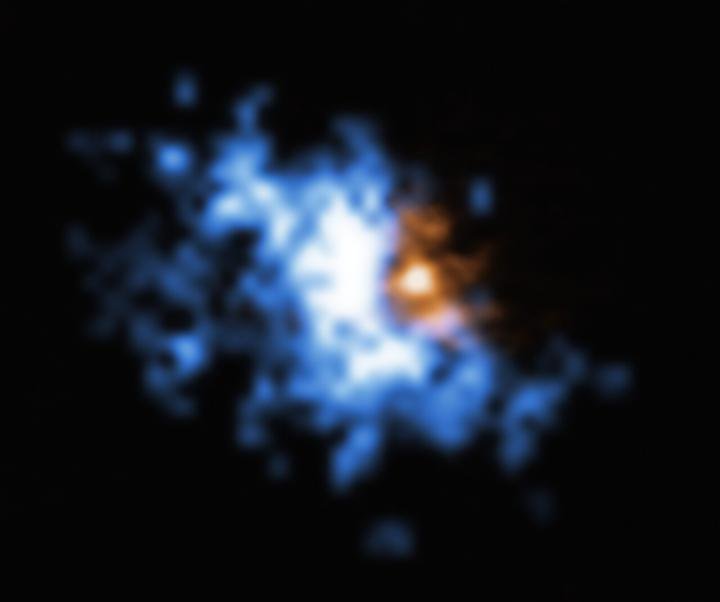Astronomers using ESO’s Very Large Telescope have observed reservoirs of cool gas around some of the earliest galaxies in the Universe. These gas halos are the perfect food for supermassive black holes at the centre of these galaxies, which are now seen as they were over 12.5 billion years ago. This food storage might explain how these cosmic monsters grew so fast during a period in the Universe’s history known as the Cosmic Dawn.
“We are now able to demonstrate, for the first time, that primordial galaxies do have enough food in their environments to sustain both the growth of supermassive black holes and vigorous star formation,” says Emanuele Paolo Farina, of the Max Planck Institute for Astronomy in Heidelberg, Germany, who led the research published today in The Astrophysical Journal. “This adds a fundamental piece to the puzzle that astronomers are building to picture how cosmic structures formed more than 12 billion years ago.”

Astronomers have wondered how supermassive black holes were able to grow so large so early on in the history of the Universe.
“The presence of these early monsters, with masses several billion times the mass of our Sun, is a big mystery,” says Farina, who is also affiliated with the Max Planck Institute for Astrophysics in Garching bei München.
It means that the first black holes, which might have formed from the collapse of the first stars, must have grown very fast. But, until now, astronomers had not spotted ‘black hole food’ – gas and dust – in large enough quantities to explain this rapid growth.
[ad_336]
To complicate matters further, previous observations with ALMA, the Atacama Large Millimeter/submillimeter Array, revealed a lot of dust and gas in these early galaxies that fuelled rapid star formation. These ALMA observations suggested that there could be little left over to feed a black hole.
To solve this mystery, Farina and his colleagues used the MUSE instrument on ESO’s Very Large Telescope in the Chilean Atacama Desert to study quasars – extremely bright objects powered by supermassive black holes which lie at the centre of massive galaxies. The study surveyed 31 quasars that are seen as they were more than 12.5 billion years ago, at a time when the Universe was still an infant, only about 870 million years old. This is one of the largest samples of quasars from this early on in the history of the Universe to be surveyed.
The astronomers found that 12 quasars were surrounded by enormous gas reservoirs: halos of cool, dense hydrogen gas extending 100 000 light years from the central black holes and with billions of times the mass of the Sun. The team, from Germany, the US, Italy and Chile, also found that these gas halos were tightly bound to the galaxies, providing the perfect food source to sustain both the growth of supermassive black holes and vigorous star formation.
[rand_post]
The research was possible thanks to the superb sensitivity of MUSE, the Multi Unit Spectroscopic Explorer, on ESO’s VLT, which Farina says was “a game changer” in the study of quasars.
“In a matter of a few hours per target, we were able to delve into the surroundings of the most massive and voracious black holes present in the young Universe,” he adds.
While quasars are bright, the gas reservoirs around them are much harder to observe. But MUSE could detect the faint glow of the hydrogen gas in the halos, allowing astronomers to finally reveal the food stashes that power supermassive black holes in the early Universe.
In the future, ESO’s Extremely Large Telescope will help scientists reveal even more details about galaxies and supermassive black holes in the first couple of billion years after the Big Bang.
“With the power of the ELT, we will be able to delve even deeper into the early Universe to find many more such gas nebulae,” Farina concludes.